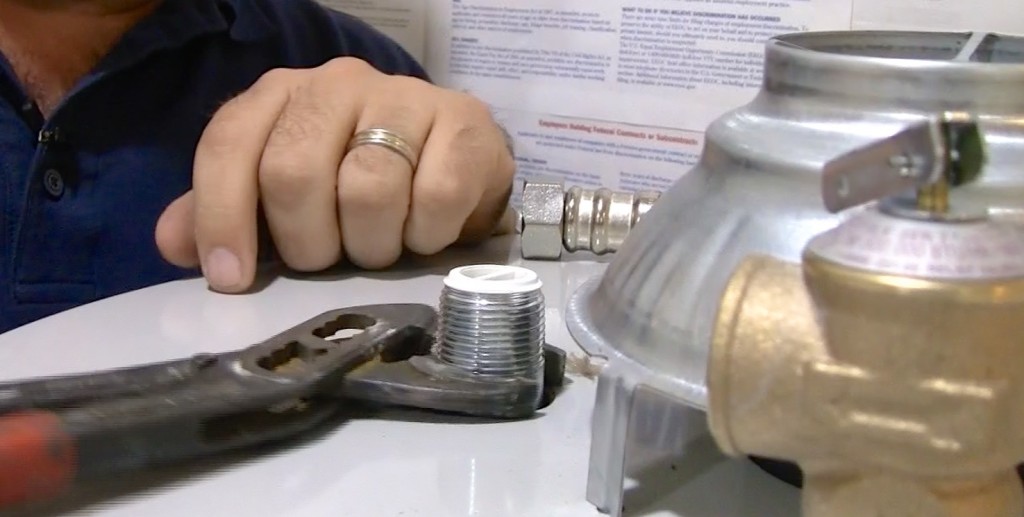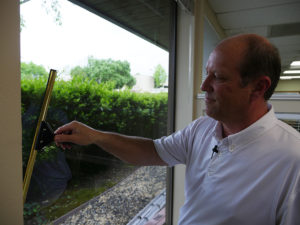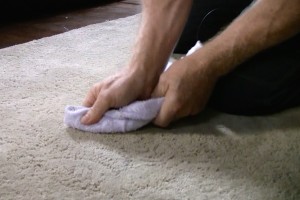
While some aspects of home maintenance are best left to a professional, there are many you can address yourself. Photo: Duncan Plumbing Ent., Inc. (2015)
Owning a home requires a fair amount of maintenance to keep things looking and functioning optimally. While some maintenance tasks are best handled by professionals, there are plenty of others you can perform yourself, even if you’ve never done them before. To highlight a few of these, we asked four Diamond Certified Expert Contributors to share their home maintenance how-tos.
How to fix a swinging door: Dennis Thompson of Thompson Construction
If a door in your home tends to swing open or closed, you might be surprised to learn that a simple adjustment can make a huge difference. First, remove a pin from one of the door’s hinges. Place it on a hard surface and hit it with a hammer to give it a slight bend in the middle. When you return the pin to its hinge, its bent angle should create enough resistance to keep the door from swinging. Be aware that you may have to repeat this step with two or even all three pins to completely resolve the problem.
How to clean a window: Eric Kennedy of Smart Window Cleaning
If you want to maintain your windows in between professional cleanings, you’ll need to have the right cleaning tools and techniques at your disposal. Start with the tools: Go to your local hardware store and pick up a strip washer (sort of like a mop that’s used on windows) and a squeegee. Once you have your tools, follow this technique:

To get your windows clean and smudge-free, you’ll need to use the right tools and methodology. Photo: Smart Window Cleaning ©2020
1. Use your strip washer to wet and scrub the window. If you have baked-on dirt, you can use some #4 steel wool (the finest grade available) to get more abrasive power.
2. Starting at the top of the window, use your squeegee to “fan” the window by moving briskly from one side to the other in a downward direction. This will displace moisture and allow the window to dry without leaving fibers or smudges. As an alternative to fanning, you can also do a straight pull: Starting at the top, pull your squeegee straight across the window, then down to the bottom. Use a towel to wipe the moisture off your squeegee, then repeat this across-and-down motion until you’ve covered the entire window.
3. Towel the edges of the window frame and sill. While your squeegee will catch most of the moisture, there’s likely to be some remaining in the frame’s edges and corners. You can collect this residual moisture by going along the frame and sill with a towel.
How to remove a recurrent carpet spot: Scott Sunkel of Start Fresh Restoration
If you have a carpet spot that reappears after repeated cleanings, don’t give up before attempting the following procedure. First, take a warm, wet, wrung-out towel and work from the outside of the spot toward the middle, wiping in one direction all the way around. Intermittently alternate to cleaner sections of the towel as you go—this will remove any residual dirt and grime that’s locking in the stain.

If you have a carpet stain that just won’t quit, a three-step procedure can provide an effective solution. Photo: American Ratings Corporation (2015)
Next, neutralize any residual chemicals from prior spot cleanings. Use a mister filled with a 50/50 solution of vinegar and water to spray over the surface of the spot. Use a dry towel to wipe with the same motion as before. Finally, rinse the vinegar and water out of the carpet by wiping around the spot with a new, wet, wrung-out towel. If done properly, these steps should put a stop to your reappearing spot.
How to replace a water heater anode rod: Scott Duncan of Duncan Plumbing Ent., Inc.
Comprised of either magnesium, aluminum or aluminum/zinc alloy, a water heater’s anode rod serves a single purpose: to attract and absorb corrosion so the tank doesn’t. After years of sustained subjection to corrosive activity, however, an anode rod ceases to fulfill its primary function, which is why it’s important to replace it on a regular basis (typically every four to five years).
Fortunately, this is something you can perform yourself. After shutting off the water to your water heater and disconnecting the supply line, use a pair of pliers to unscrew and remove the anode rod. Typically, the rod’s hexagonal head will be visible at the top of the water heater—if you have trouble finding it, consult your owner’s manual. Once the old rod is out, drop in the new one and tighten it in place with your pliers before reconnecting the supply line and turning the water back on.
